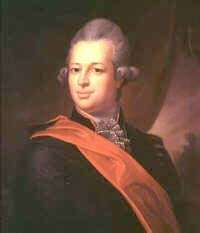Carl Linnaeus the Younger
| Carl Linnaeus the Younger, or Carl von Linné, or Carolus Linnaeus the Younger | |
|---|---|
 Portrait by Jonas Forsslund | |
| Born |
20 January 1741 Falun |
| Died |
1 November 1783 (aged 42) Uppsala |
| Cause of death | Jaundice |
Carl Linnaeus the Younger, Carl von Linné or Carolus Linnaeus the Younger (20 January 1741 – 1 November 1783) was a Swedish naturalist. He is known as Linnaeus filius (Latin for Linnaeus the son; abbreviated to L.f. as a botanical authority) to distinguish him from his famous father, the systematist Carl Linnaeus.
He was enrolled at the University of Uppsala at the age of nine and was taught science by his father's students, including Pehr Löfling, Daniel Solander and Johan Peter Falk. In 1763, aged just 22, he succeeded his father as the head of Practical Medicine at Uppsala. His promotion to professor — without taking exams or defending a thesis — caused resentment among his colleagues.
Linnaeus' work was modest in comparison to that of his father. His best-known work is the Supplementum Plantarum systematis vegetabilium of 1781, which contains botanical descriptions by the elder Linnaeus and his colleagues, edited and with additions by the son.
He inherited his father's extensive scientific collections and correspondence and worked to preserve them. When he died childless on 1 November 1783 his mother sold the collections to the English botanist Sir James Edward Smith, who left them to the Linnean Society of London.
References
External links
| Latin Wikisource has original text related to this article: |